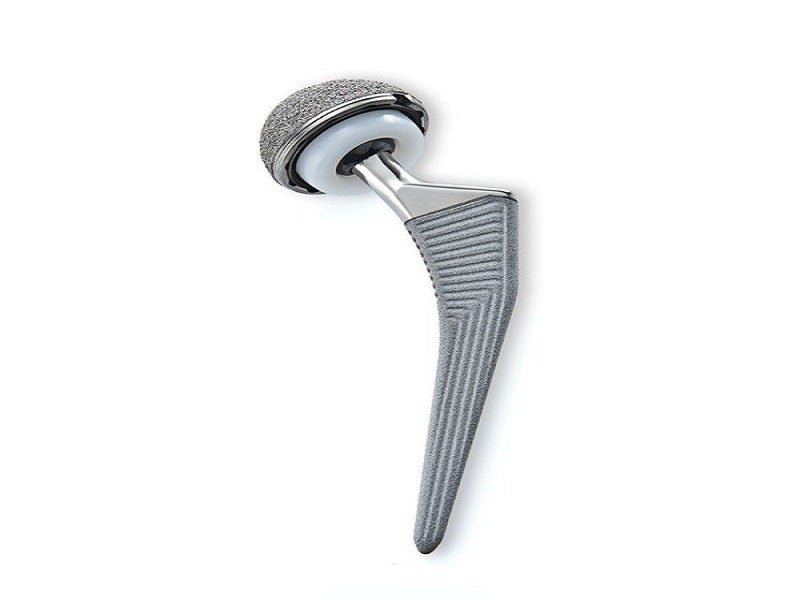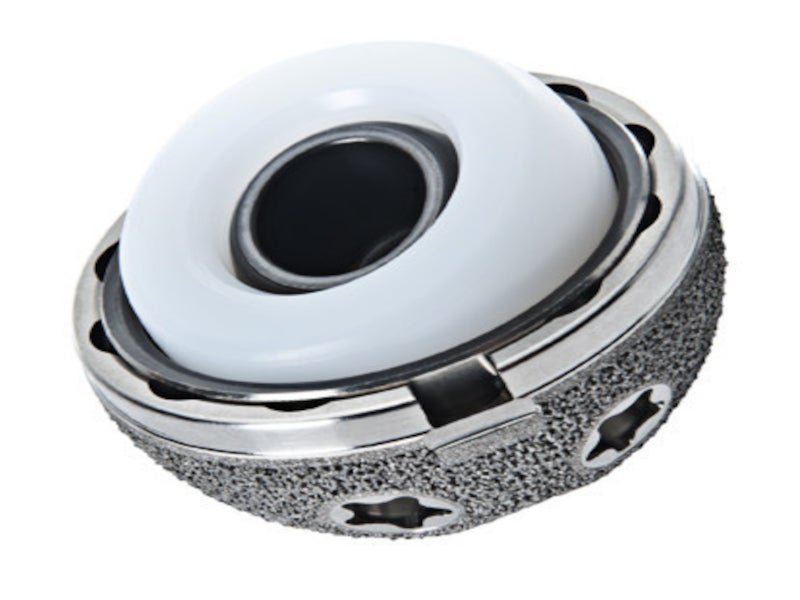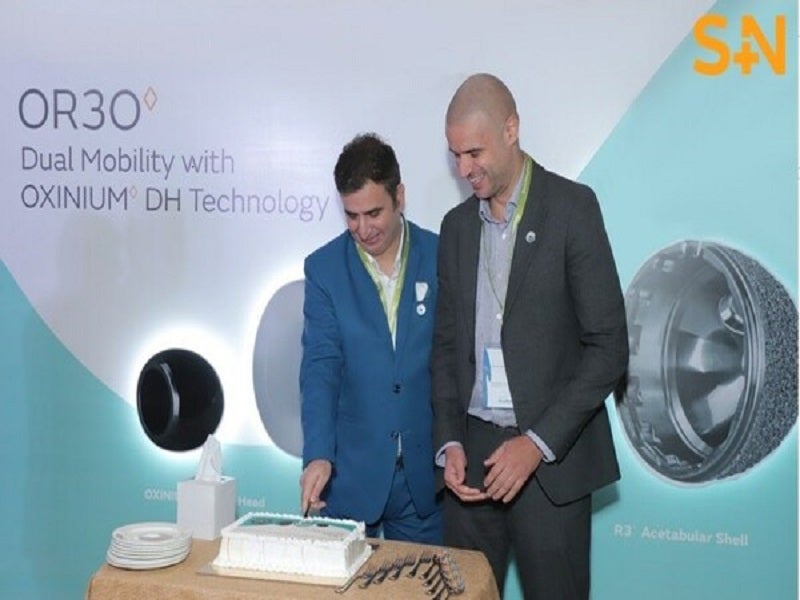The OR3O™ Dual Mobility System is a single-use, dual-mobility implant developed by Smith+Nephew, a medical technology company based in the UK, for primary and revision total hip arthroplasty.
It features the proprietary OXINIUM™ DH (Diffusion Hardened) advanced bearing technology, reducing the wear and corrosion risks associated with Cobalt Chrome (CoCr) alloy, which is used in traditional implants.
The OR3O system is eligible for treating advanced degeneration of the hip joint due to degenerative, post-traumatic, or rheumatoid arthritis; fracture or avascular necrosis of the femoral head; and failure of previous hip surgery such as joint reconstruction, internal fixation, arthrodesis, hemiarthroplasty, surface replacement arthroplasty, or total hip replacement.
The dual mobility system offers low wear rates, adequate clearance to adjust deformation, minimal fatigue failure, and enhanced corrosion resistance. It provides cross-compatibility with the R3™ acetabular system, also used in total hip replacement surgery.
Launched in the US in November 2019, the system rapidly revolutionised the modular dual mobility market segment by incorporating OXINIUM DH instead of the conventional cobalt-chromium-molybdenum (CoCrMo) alloy liner options.
Smith+Nephew launched the OR3O Dual Mobility System in Japan in September 2022 and subsequently in India in August 2023.
OR3O Dual Mobility System design and features
The system is developed with a modular design, consisting of two implant components, OR3O liner and OR3O XLPE insert, which are implanted without bone cement and together create the concept of dual mobility. The system allows for movement at two separate articulating surfaces within the same joint space.
The OR3O liner is a diffusion-hardened, oxidised zirconium (DH-OXZr) acetabular (socket) liner, while the insert is made of highly cross-linked polyethylene (XLPE).
The OR3O liner is positioned into a monolithic acetabular shell using a locking taper. The outer diameter of the OR3O XLPE insert sits within the OR3O liner and forms an inner articular surface, which engages with femoral heads of 22mm and 28mm diameters.
The femoral heads are securely held within the OR3O XLPE insert through a snap-fit locking mechanism.
Unlike traditional solutions, dual mobility implants are designed with a small diameter femoral head that securely locks into a larger polyethylene insert.
The system improves stability and offers an extended range of motion and jump distance. It minimises the risks of dual mobility-specific issues such as intra-prosthetic dissociation (IPD). The self-centring design reduces the risk of IPD and achieves higher resistance to torque against dislocation.
The OR3O design balances and delays component impingement while allowing the resulting translational jump distance, or distance from the centre of the femoral component.
OXINIUM DH technology
OXINIUM DH is a part of Smith+Nephew’s OXINIUM technology platform. It improves hardening depth through the deployment of an additive manufacturing method.
The OR3O Dual Mobility System incorporates advanced bearing surface OXINIUM DH for its liner and proprietary VERILAST™ Technology for its femoral head and polyethylene inserts. VERILAST Technology is the combination of OXINIUM material and a unique XLPE formula.
The laboratory-tested bearing combination of OXINIUM with XLPE for total hip arthroplasty showed superior wear performance in 45 million cycles of simulated wear testing.
Powered by the company’s patented OXINIUM DH, OR3O implants undergo a surface transformation from Zr-2.5Nb alloy to a phase-stable, monoclinic zirconia-bearing surface. The OXINIUM DH diffusion process drives the hardening depth from approximately seven microns to about 25 microns, resulting in damage resistance.
OXINIUM is a more wettable surface than CoCrMo alloy, improving lubrication.
Benefits of OR3O Dual Mobility System
OR3O assists in simplifying the dual mobility procedure in terms of ease of insertion, removal, or acetabular cup selection. The hydrophilic ceramic surface of OXINIUM DH reduces friction at the outer articulation in comparison to CoCrMo alloy. The characteristic contributes to the proper functioning of the eccentric liner.
Its 18° locking taper improves seating, and the optimised hard-bearing liner thickness resists deformation and pinching of the insert across all cup sizes. The liner removal feature permits the removal of OR3O, XLPE, and ceramic liners.
The R3 and REDAPT Modular cup systems integrate a liner removal feature and instrument that support up to a 43:1 mechanical advantage.
The R3 acetabular system, combined with the Smith+Nephew portfolio of hip replacement systems, provides an advanced hip replacement system, featuring a 10A ODEP rating, a wide range of advanced bearing options, an advanced porous coating designed to achieve superior primary stability, and flexible instrumentation.









